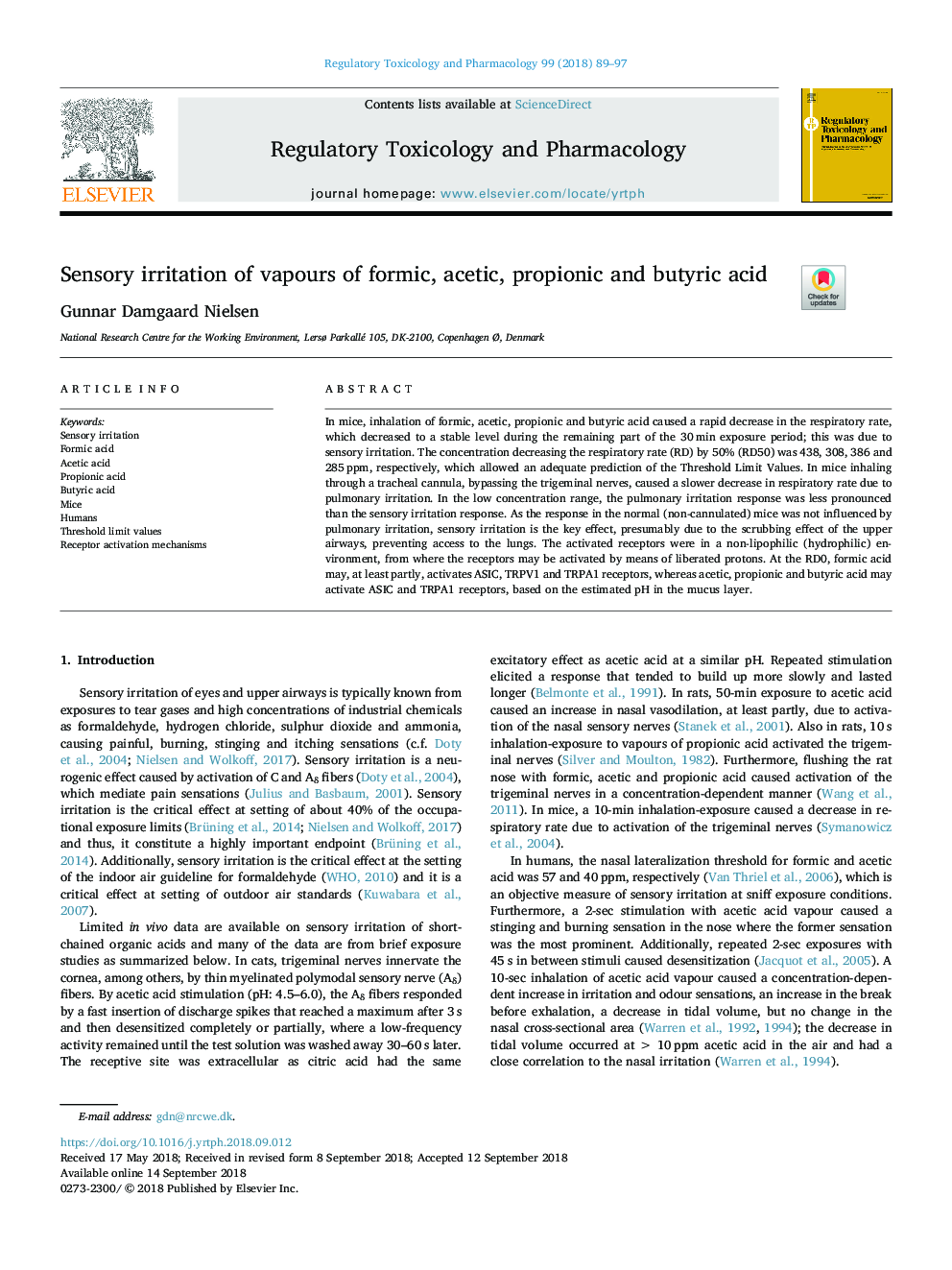| کد مقاله | کد نشریه | سال انتشار | مقاله انگلیسی | نسخه تمام متن |
|---|---|---|---|---|
| 10137718 | 1645770 | 2018 | 9 صفحه PDF | دانلود رایگان |
عنوان انگلیسی مقاله ISI
Sensory irritation of vapours of formic, acetic, propionic and butyric acid
ترجمه فارسی عنوان
سوزش حسی بخارات اسید فرمیک، استیک، پروپیونیک و بوتیریک
دانلود مقاله + سفارش ترجمه
دانلود مقاله ISI انگلیسی
رایگان برای ایرانیان
کلمات کلیدی
تحریک حسی، اسید فرمیک، استیک اسید، اسید پروپیونیک، اسید بوتیریک، موش، انسان، مقدار محدودیت آستانه، مکانیزم فعال سازی گیرنده،
موضوعات مرتبط
علوم زیستی و بیوفناوری
علوم محیط زیست
بهداشت، سم شناسی و جهش زایی
چکیده انگلیسی
In mice, inhalation of formic, acetic, propionic and butyric acid caused a rapid decrease in the respiratory rate, which decreased to a stable level during the remaining part of the 30â¯min exposure period; this was due to sensory irritation. The concentration decreasing the respiratory rate (RD) by 50% (RD50) was 438, 308, 386 and 285â¯ppm, respectively, which allowed an adequate prediction of the Threshold Limit Values. In mice inhaling through a tracheal cannula, bypassing the trigeminal nerves, caused a slower decrease in respiratory rate due to pulmonary irritation. In the low concentration range, the pulmonary irritation response was less pronounced than the sensory irritation response. As the response in the normal (non-cannulated) mice was not influenced by pulmonary irritation, sensory irritation is the key effect, presumably due to the scrubbing effect of the upper airways, preventing access to the lungs. The activated receptors were in a non-lipophilic (hydrophilic) environment, from where the receptors may be activated by means of liberated protons. At the RD0, formic acid may, at least partly, activates ASIC, TRPV1 and TRPA1 receptors, whereas acetic, propionic and butyric acid may activate ASIC and TRPA1 receptors, based on the estimated pH in the mucus layer.
ناشر
Database: Elsevier - ScienceDirect (ساینس دایرکت)
Journal: Regulatory Toxicology and Pharmacology - Volume 99, November 2018, Pages 89-97
Journal: Regulatory Toxicology and Pharmacology - Volume 99, November 2018, Pages 89-97
نویسندگان
Gunnar Damgaard Nielsen,
